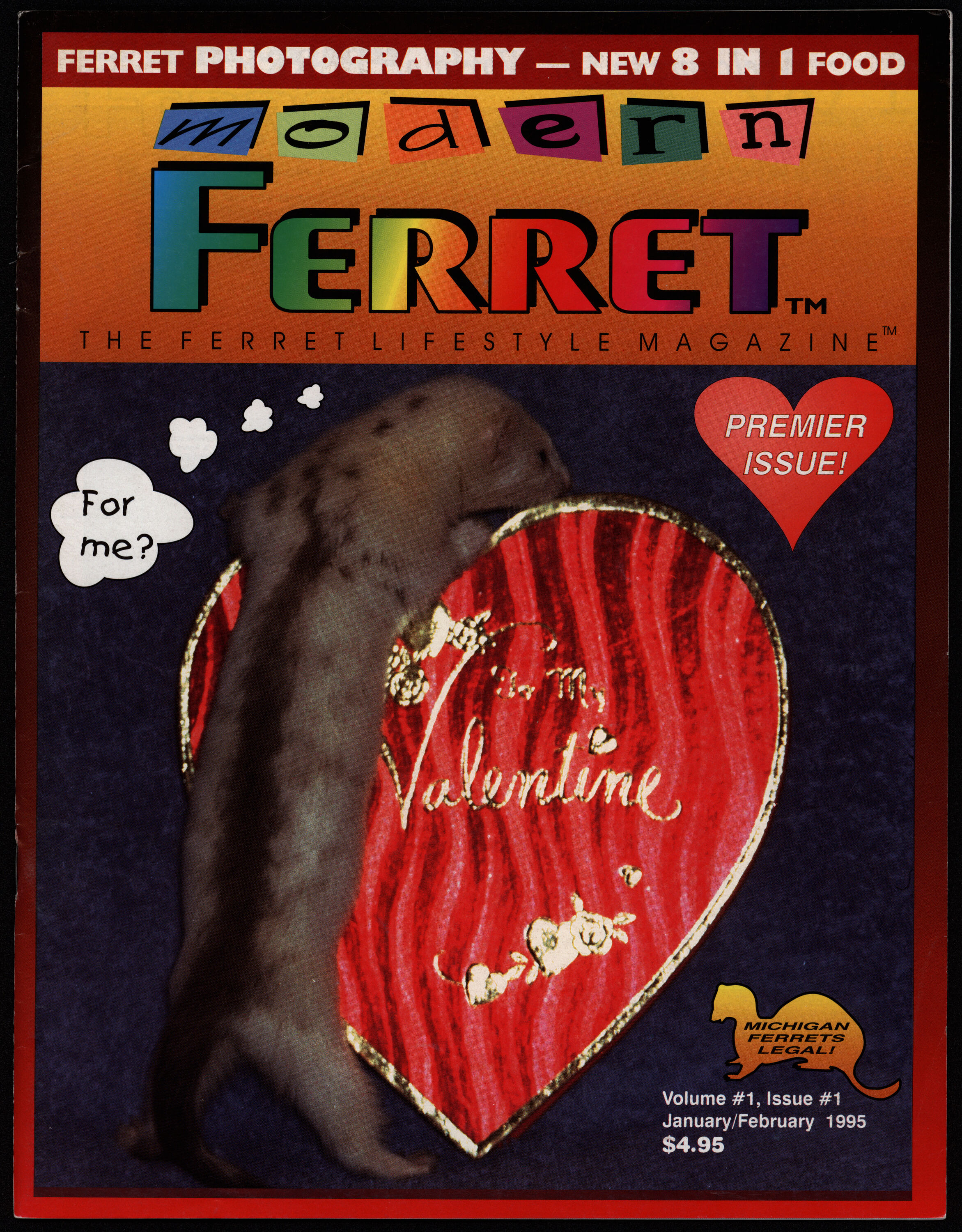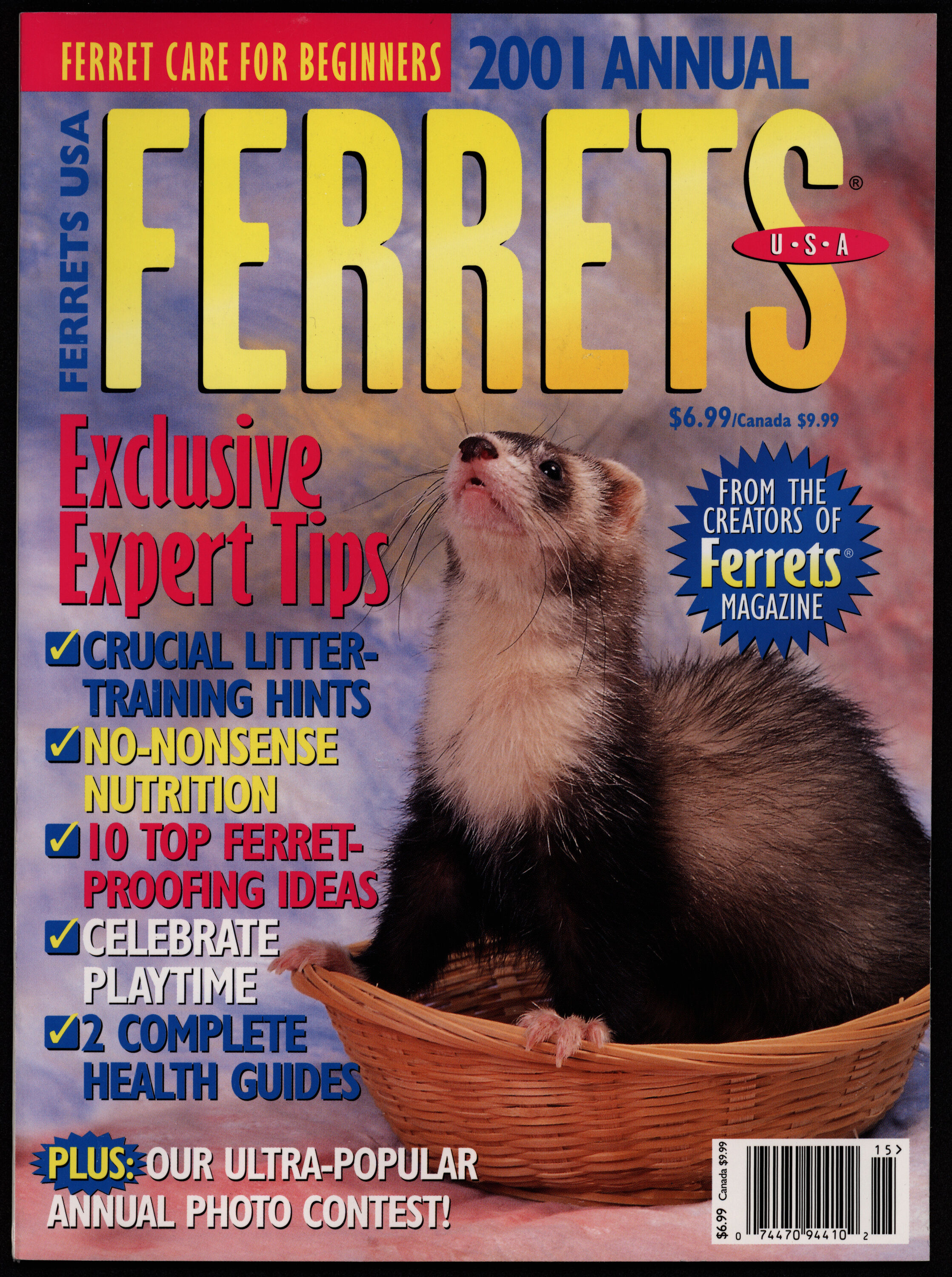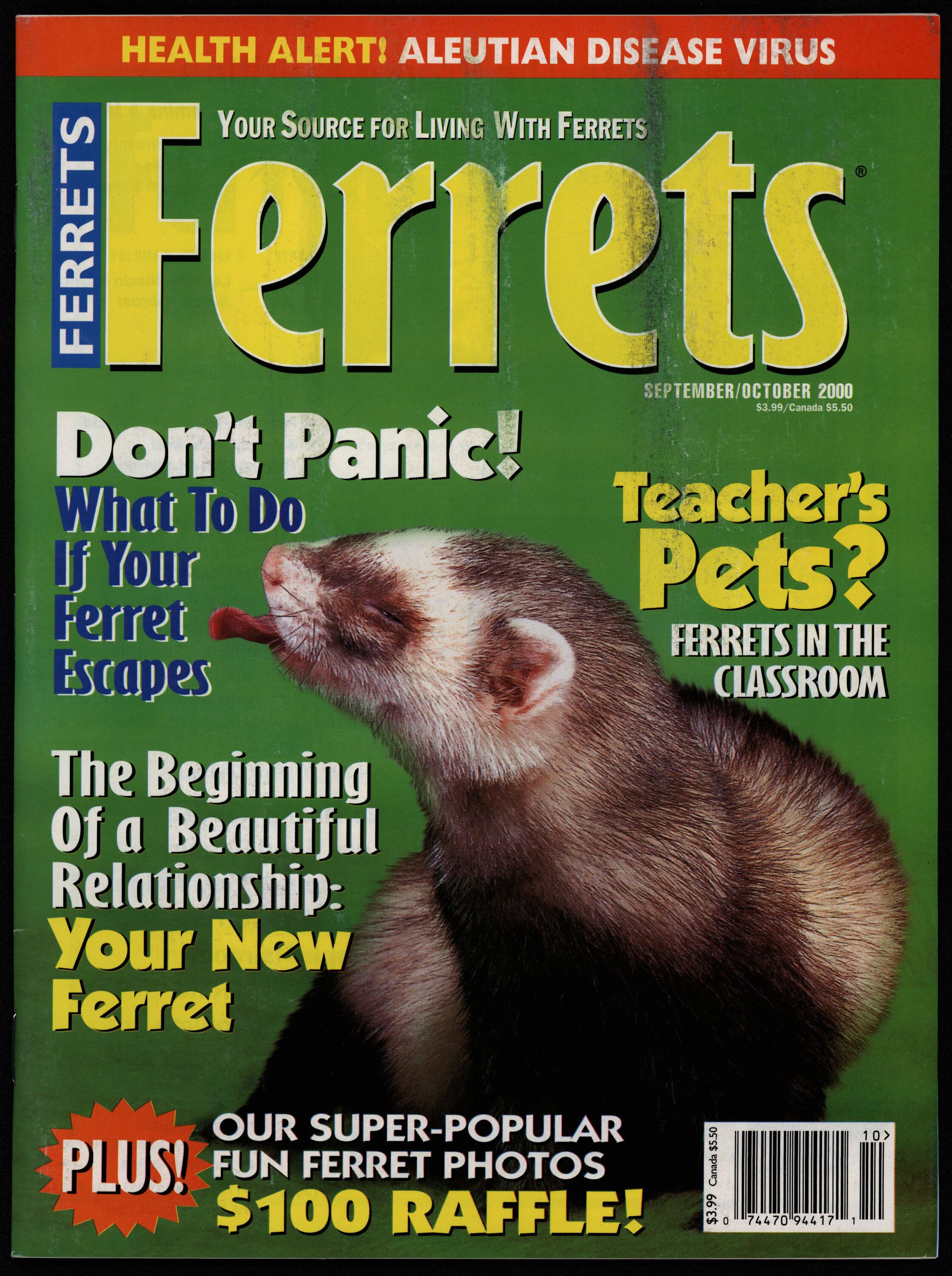Fancy Magazines for Pet Fanciers: Birds, Cats, Dogs, and Ferrets
Ferrets
Ferrets belong to the same family as the weasel: the Mustelidae. The word “ferret” originally referred to a domesticated form of the European polecat (Mustela putorius, or “the stinky weasel”), although there is a wild species called the black-footed ferret (Mustela nigripes, or “the black-footed weasel”) native to North America. The word “polecat” is probably derived from “cat” and either the word for “chicken” or the word for “foul,” reflecting either the creature’s preferred food or its ability to spray a powerful stink. “Ferret,” meanwhile, comes from the Latin word for “little thief,” which seems appropriate given their adorable facial markings.
Unlike cats and dogs, ferrets haven’t been along for very long, only about 2,500 years. Historically, ferrets were used to hunt rabbits and rodents, whether by flushing them out of their burrows or by protecting grain stores. It wasn’t until the 1980s and 1990s that ferrets became popular as housepets rather than working animals. The scientific term for a true ferret, Mustela (putorius) furo, literally means “the (stinky) weasel thief.” Ferrets are known for their energetic behavior, including their “war dance,” which is not a sign of aggression but instead signals joy or excitement. A ferret doing the war dance will hop around and twist its body in mid-air. Polecats, weasels, and minks also perform the war dance, often immediately after successfully killing their prey.
Despite the comparatively small ferret-owning community, at one point, there were three ferret-centric magazines being published at the same time in the United States: Modern Ferret, Ferrets, and Ferrets U.S.A.
Modern Ferret was the first of the three to appear. It was produced by Mary and Eric Shefferman, two Long Island-based ferret lovers. They started the magazine in 1995 and by 1999, it was listed by Media Industry Newsletter (MIN) as one of the 12 best titles in America. Part of the appeal of Modern Ferret was its exhuberance and DIY charm, as typified by the magazine covers. Over-the-top color combinations and digital effects, as well as the characteristic “ransom note effect” of the title all suggested a homemade ’zine, and the inside featured quirky cartoons and reports on the health and antics of the Sheffermans’ pet ferrets alongside more usual interviews and advice on ferret care. The magazine was done almost entirely in-house, with articles by the Sheffermans and volunteer contributors. Unfortunately, this small production team was vulnerable to illnesses and other crises, and in 2003 they were sadly been driven out of business by the big publisher Fancy Publications' Ferrets and Ferrets U.S.A.
The two ferret magazines produced by Fancy Publications were much more professional than Modern Ferret, both in terms of design and content. Ferrets U.S.A. debuted in 1995 with the “1996 Annual” and appeared once a year until at least 2017 while Ferrets debuted in 1997 and ran on a bimonthly basis until 2008 before transitioning to a purely online format as part of the Small Animal Channel website, which has since closed down. The larger staff of Fancy Publications meant a more regular schedule and more content, although Ferrets U.S.A. sometimes would also collect and reprint serial content from Ferrets like the “Ferret Personality” series that reappeared in the 2001 Annual. Both magazines gave advice on ferret care, with articles about how to ensure ferrets were happy and healthy.
Both magazines by Fancy Publications gave advice on ferret care, with articles about how to ensure ferrets were happy and healthy. There is less advice on whether you should get a ferret since, as the letter from the editor for the first issue of Ferrets U.S.A. notes, “If you’re reading this, chances are you own a ferret.” Instead, the magazines offer medical advice, tips on rescuing escaped ferrets (ferrets are often escape artists), and recommendations on introducing a pet ferret to other pets in the house. Much of the quirky content in these magazines was derived less from the writing and more from the subject matter, as well as the advertisements, many of which would not have looked out of place in Modern Ferret.


